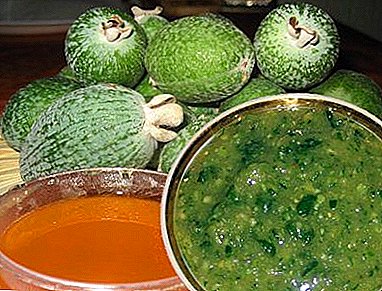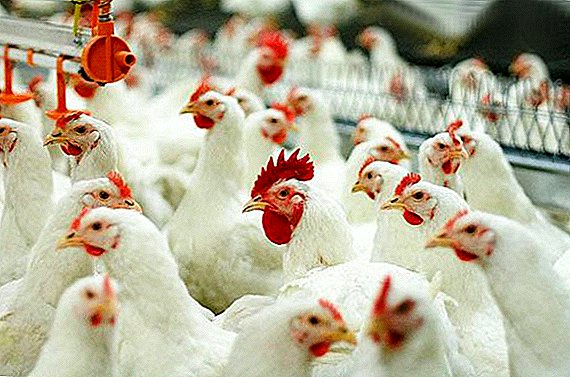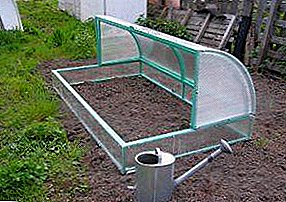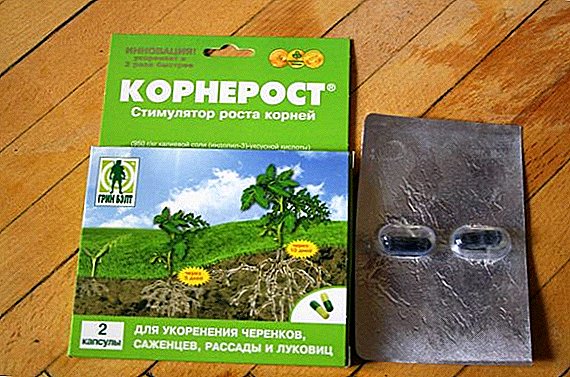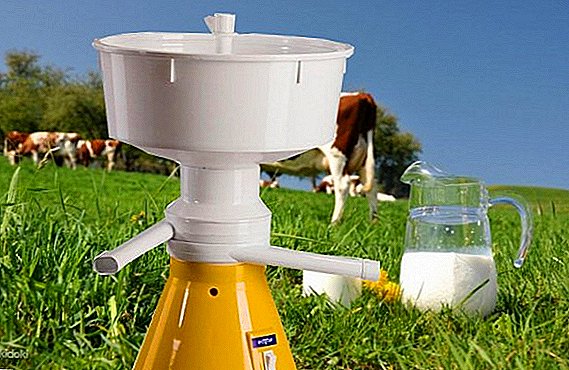 The milk separator provides new opportunities for farmers who specialize in breeding dairy cattle breeds. With this simple device, regardless of the scale of production, you can independently prepare homemade butter, cream, skimmed milk, sour cream, buttermilk, cottage cheese and whey. However, the choice of the desired model determines the productivity and number of dairy individuals. How to use the unit, and what to look for when buying it - read further in the article.
The milk separator provides new opportunities for farmers who specialize in breeding dairy cattle breeds. With this simple device, regardless of the scale of production, you can independently prepare homemade butter, cream, skimmed milk, sour cream, buttermilk, cottage cheese and whey. However, the choice of the desired model determines the productivity and number of dairy individuals. How to use the unit, and what to look for when buying it - read further in the article.
Milk Separator
If fresh milk is poured into a glass jar and left for several hours, the liquid will lose its uniformity due to the fat it contains. Its tiny droplets, clearly viewed under the microscope, float to the surface, resulting in a thick yellowish-cream layer. At this stage a separator is required.
Did you know? The World Health Organization recommends that each inhabitant of the planet consume up to 330 kg of milk per year.
What is it needed for
This device allows you to divide the milk into fractions. The result is a cream and skimmed molokoprodukt purified from various impurities. After ripening, the milk suspension using a separator quickly stratified into curd and whey.  Manual selection of fat is very tedious and ineffective, because in the process of separation there is an opportunity to get any percentage ratio of fat content. Experienced farmers know that the ratio of 1:10 obtained at the final stage of processing indicates the production of 1 liter of cream and 10 liters of skim milk from every 11 liters of fresh milk.
Manual selection of fat is very tedious and ineffective, because in the process of separation there is an opportunity to get any percentage ratio of fat content. Experienced farmers know that the ratio of 1:10 obtained at the final stage of processing indicates the production of 1 liter of cream and 10 liters of skim milk from every 11 liters of fresh milk.
It will probably be useful for you to find out what are the processing methods and types of cow's milk, and also consider the characteristics of some milk coolers.
When re-separation of the finished cream can be converted into butter or more liquid cream.
In the household and on small farms, often for the primary processing of milk, conventional cream separators are used, which represent a streamlined system of continuous fluid supply to the rotating dish-shaped drum.  Cream separator for primary milk processing The result of the selection of fat from the suspension depends on:
Cream separator for primary milk processing The result of the selection of fat from the suspension depends on:
- programmed percentage of cream and skim milk;
- rotational speed of the drum element;
- primary milk product temperatures;
- flow rate through the centrifuge.
Did you know? Finns drink more milk than anyone else in the world. During the year, each resident of Finland consumes about 391 liters of this product. Their antipodes can be safely considered the Chinese, whose annual consumption of dairy products does not exceed 30 kilograms..
How does it work
All separators work according to a single principle, based on the effect of centrifugal force:
- The whole process of dairy liquid separation takes place in a drum unit, which consists of a set of perforated plates and a cover on a glass.
- Each of the parts fits in a certain order, resulting in 6 outputs for processed products. The drain hole is located closer to the wall of the tank, into which fresh milk is fed.
- With the help of a custom cork valve, the liquid enters the float section, from where it flows down through the central drum. The faster the plate centrifuge rotates, the faster the separation of fat molecules occurs.
- In the process of moving the liquid is distributed over the entire surface.
- The return through all openings rises in a reception chamber and departs with the help of a horn into a container prepared in advance.
- In addition, a special mud trap is provided in the apparatus, where third-party impurities are collected.

What are
Despite the single principle of operation, each model of separators is characterized by individual features that affect the quality and volume of the products obtained. Modern farmers use 2 types of appliances: household and industrial. Let us consider in more detail each of them.
Important! If the drum plates are not clean enough or the sequence of their placement is disturbed, the machine will not work and the milk will flow from all the cracks.
Household
These devices are designed for processing small portions of fresh milk suspension. After separation, cream and fat-free return are obtained in the open form, it is also possible to produce home-made butter.
Depending on the drive used, home appliances are:
- Mechanical (when separation occurs manually). For example, the model RZ OPS, designed for low productivity and is equipped with a 5.5 l bowl. In the plastic version, the unit costs about $ 50, and in the metal version it costs twice as much.
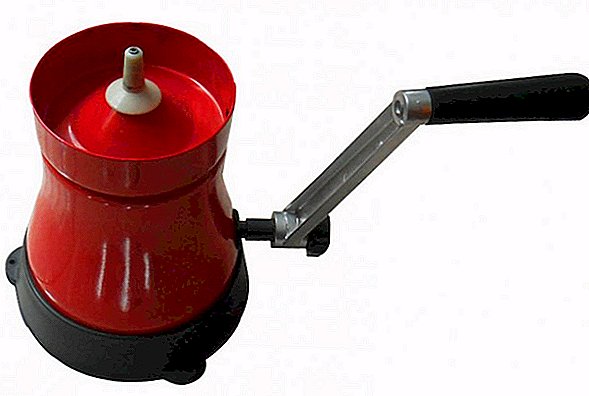
- Electric (when the design includes an electric motor that drives it). For example, the model "Farmer". It differs from the previous separator by a high speed of rotation of the disk drum, which makes it possible to more effectively separate dairy products depending on their density. In addition, manufacturers have provided a regulator for the frequency of rotation of the drum unit. The device due to the built-in electrical equipment is heavier in weight, and its cost starts from $ 105 (depending on the equipment and material of the working part).
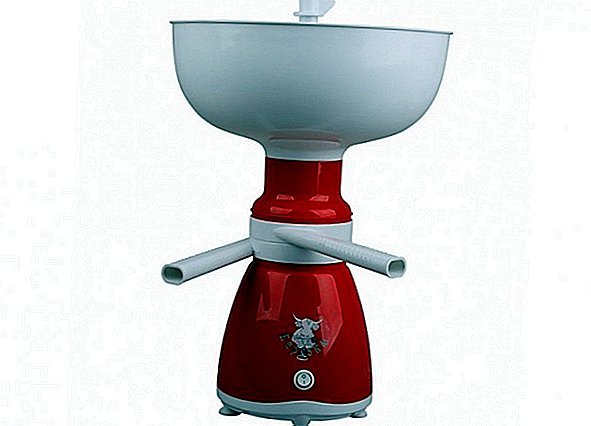
Industrial
This kind of separators is designed for large volumes of processing, therefore it is commissioned exclusively by electric motors. Some industrial models can be equipped with the additional function of separating brewed cottage cheese from whey.
Practically all separators have mud traps for the selection of mechanical impurities that fell into suspension during milking.
We recommend that you familiarize yourself with the causes of blood in cow's milk.
As well as household, industrial units can have an open type of construction, which does not provide for the protection of primary and secondary products from contact with air. However, the majority of production separating machines are characterized by the contact of milk and the atmosphere at the entrance, and it goes under high pressure into a hermetically sealed container.  The most expensive models allow to seal the incoming suspension and all products made from it. In the assortment there are also options that reduce the milk fat content for a given program.
The most expensive models allow to seal the incoming suspension and all products made from it. In the assortment there are also options that reduce the milk fat content for a given program.
An example of such separators can be considered the model KMA Artern Nagema, whose capacities allow to overtake 25,000 liters of milk per hour. The cost of the unit starts from $ 350.
Important! Milk before separation must be heated to 40-45 ° C. If there is no thermometer at hand, the temperature of the milk should be slightly higher than the temperature of the fingers. Warm fresh milk can be separated immediately after milking.
How to choose a separator for milk
When choosing a milk separator, the farmer needs to take into account the volume of processed products, the frequency of use of the device, the area allocated for it, as well as its technical characteristics. Delve into the details. 
Volume of processed milk
Models of household appliances are characterized by dairy receivers, the volume of which starts from the minimum 5.5 liters. Most often there are bowls designed for 12 liters. However, at home, processing options of 30 or more liters of liquid are possible. Industrial units are characterized by a more powerful potential, from 100 liters.
Some manufacturers, for convenience, provide a special adjusting screw, which allows to vary the amount of processing.
We advise you to consider all the features of the design of the milking machine for cows.
Manufacturing material
In the assortment there are separating structures made of plastic and metal. Note that the latter is characterized by a long service life and endurance, and the first is cheap.
In metal devices most often the receiving bowl and other parts are made of aluminum (although there are also steel components). It is much easier to clean them of fat particles of dairy products, and also such material practically does not accumulate microorganisms on itself. In addition, if necessary, washing the apparatus can be carried out with the participation of any abrasive detergents.  If the machine will be used rarely, you should not spend money on the purchase of an expensive metal model. The needs of the farm family is quite able to provide a plastic economy option.
If the machine will be used rarely, you should not spend money on the purchase of an expensive metal model. The needs of the farm family is quite able to provide a plastic economy option.
Did you know? The championship in milk production belongs to the United States of America. US farms produce about 80 billion liters of this product per year. For comparison: in the UK, the annual volume of dairy production fluctuates within 14 billion liters.
Functionality
The quality of the dairy products depends on the technical characteristics of the purchased device. In many modern models fat regulators are provided, allowing to program the quantity and quality of the cream produced, as well as skim milk. Most often, the adjustable ratio is in the range of 1: 10-1: 4.
Depending on the functionality of the specialists, all separators are divided into:
- cream separators (at the exit they give out cream and fat-free return);
- normalizers (necessary to regulate milk fat);
- milk cleaners (created to clean the primary fluid from extraneous mechanical additives);
- devices for curd dehydration;
- separators-manufacturers of high fat cream.

Device type
Household appliances can be triggered by hand operated or by electricity. All industrial machines operate on 220 V. Some electrical structures can safely withstand voltage surges in the range of 160-240 V.
However, if the unit will be operated in remote areas with unreliable power supply and frequent voltage drops, it is better to prefer a mechanical model. In such separators, instead of an electric motor, a rotary knob is provided in the lower part, which actuates the drum unit.
Important! When choosing electrical separators, pay attention to engine performance. Its stability guarantees getting the cream of the desired quality.According to experts, the volume of receivers for both types of devices do not differ. At the same time, the manual separator wins in price (costs a quarter cheaper), and the electric separator in terms of quality performance.

Which milk separator is better
In the modern assortment of milk separators is very difficult to make the right choice. After all, each manufacturer tries to convince the buyer of the uniqueness and versatility of their goods. Therefore, in the table below we offer you a rating of the best models with detailed technical characteristics.
| Model name | Motor SICH 100-15 |
| Functionality | Cream Separator |
| Material | Metal, polypropylene |
| Milk capacity, l / h | 100 |
| Drum rotation frequency, rpm | 12 |
| Number of plates in the drum, pcs. | 10-12 |
| Capacity of a bowl of a molokopriemnik, l | 12 |
| Fat content | 0,05 |
| Power consumption, W | 60 |
| Adjustment range of volumetric ratios of cream to skin cream | 1: 4 to 1:10 |
| Electricity consumption, W / h | 0,120 |
| Current frequency, Hz | 50 |
| Price, USD | 170 |

| Model name | UralElektro SM-19-DT |
| Functionality | Electric cream dispenser |
| Material | Stainless steel, plastic |
| Milk capacity, l / h | 100 |
| Drum rotation frequency, rpm | 12000 |
| Number of plates in the drum, pcs | 12 |
| Capacity of a bowl of a molokopriemnik, l | 8 |
| Fat content | 0,05 |
| Power consumption, W | 45 |
| Adjustment range of volumetric ratios of cream to skin cream | 1: 4 to 1:10 |
| Electricity consumption, W / h | 0, 60 |
| Current frequency, Hz | 50 |
| Price, USD | 730 |

| Model name | P3-OPS (Penzmash) |
| Functionality | Manual device for separating milk into cream and skimmed milk, as well as for cleansing it from various impurities |
| Material | High quality plastic |
| Milk capacity, l / h | 50 (after that it is automatically turned off for 20 minutes for rest) |
| Drum rotation frequency, rpm | 10,000 (at 60-70 revolutions of the handle) |
| Number of plates in the drum, pcs. | 12 |
| Capacity of a bowl of a molokopriemnik, l | 5,5 |
| Fat content | 0,08 |
| Power consumption, W | - |
| Adjustment range of volumetric ratios of cream to skin cream | From 1:10 |
| Electricity consumption, W / h | - |
| Current frequency, Hz | - |
| Price, USD | 110 |

| Model name | ESB-02 (Penzmash) |
| Functionality | Electric cream dispenser |
| Material | Polycarbonate, Aluminum |
| Milk capacity, l / h | 10,000 (at 60-70 revolutions of the handle) |
| Drum rotation frequency, rpm | 9 500 |
| Number of plates in the drum, pcs. | 11 |
| Capacity of a bowl of a molokopriemnik, l | 5,5 |
| Fat content | 0,05 |
| Power consumption, W | 40 |
| Adjustment range of volumetric ratios of cream to skin cream | 1: 4 to 1:10 |
| Electricity consumption, W / h | 40 |
| Electricity consumption, W / h | 50 |
| Price, USD | 102 |

| Model name | P3-OPS-M |
| Functionality | Mechanical Creamer and Churn |
| Material | Plastic |
| Milk capacity, l / h | 12 |
| Drum rotation frequency, rpm | 10,000 (at 60-70 revolutions of the handle) |
| Number of plates in the drum, pcs. | 10 |
| Capacity of a bowl of a molokopriemnik, l | 5,5 |
| Fat content | 0,05 |
| Power consumption, W | - |
| Adjustment range of volumetric ratios of cream to skin cream | 1: 4 to 1:10 |
| Electricity consumption, W / h | - |
| Current frequency, Hz | - |
| Price, USD | 97 |

How to use the separator: operating rules
For a long service life and better quality of dairy products produced, it is important to observe the following recommendations:
- Before working, make sure that the completing plates are properly positioned, that the containers are clean, and also check the integrity of the electrical cord. Tighten the drum nut well.
- For reliability, secure the unit on a flat surface with 3 screws and washers. Please note that the separation should take place in a dust-free room with optimum moisture content of 65%.
- In the case of long-term storage of an electric separator at minus temperature, it is necessary to keep it in a warm, dry room for at least 6 hours before switching on.
- Place the nozzles of the skimmers and cream in a comfortable position and substitute a large container for skim milk and a small one for cream.
- Install the float chamber, insert the float into the cavity, insert the milk receiver and the plastic stopper into the tapered hole at the bottom of the housing. Please note: the cork must be in the closed position.
- Before switching on the electric separator, set the key switch to the "0" ("Off") position. After that, insert the plug into the socket.
- At your discretion, adjust the percentage of fat. This is done using a specially provided screw regulator. If you need thick cream, then the screw should be rotated clockwise, if liquid - counterclockwise. Usually one turn in one direction or the other is sufficient.
- Pour the filtered warmed or fresh fresh milk into the bowl and turn on the device's electric drive. After reaching the full speed of rotation of the drum, 30-40 seconds after switching on, open the tap, i.e. Turn the cork handle (pointed) to the notch on the edge of the receiver.
- After separation of the milk suspension for washing the device, fill the receiver bowl with 3 liters of warm water and pass it through the included separator to remove skimmed cream and cream. At the same time make sure that the time of continuous operation of the machine does not exceed the standards recommended by the manufacturer.
- After that, the device must be disassembled and rinsed thoroughly in warm water. To do this, disconnect it from the mains and wait for the shaft to stop completely. Carefully remove the drum unit, preventing it from swinging excessively. Using a special wrench, unscrew the nut, but in no case do not unscrew the fully adjusting screw.
- Washing drum parts is carried out in warm water. Milk and dirt are removed with a brush, and the channels are cleaned with a brush, especially the square hole of the adjusting screw, as well as the three oblique holes of the tray holder. Metal construction drums are cleaned with acids and alkalis, especially when it comes to aluminum (otherwise parts made from this material will become stained and may collapse).
- In the reverse order of disassembly, collect all the washed and dried parts. Do not forget to lubricate the adjusting nut with any edible fat. Do not overtighten the nut and be sure to tighten.
Possible faults separator
Improper operation, heavy loads and poor-quality washing of component parts often disable the device and affect the characteristics of the products. Consider the problems in the work of dairy aggregates faced by farmers.
Read more about how to choose a good dairy cow, as well as find out what features of the structure of the udder of the cow.
Bad degreasing
According to experts, the causes of this separation defect lie in the likelihood of air leaks or in the leaks of pestering the parts, which is quite likely due to their wear and rejection.In addition, drum balancing may decrease with time in the instrument, which impairs degreasing.
Also, if the distance between the plates of the drum is too great, it adversely affects the quality of cream separation. However, this is as bad as too small a distance. Thus, the golden mean and durability of materials is important.  To fix the problem:
To fix the problem:
- check the wear of components;
- brush the parts and clean hard milky particles with a brush and detergent;
- clean all channels of the device and grease the adjusting screw;
- adjust the drum unit;
- replace damaged parts if necessary;
- make sure that the drum assembly is properly assembled and, if necessary, deliver the missing intermediate plates;
- tighten the drum nut tightly;
- Check the installation of the sealing ring.
Important! If the separation process is accompanied by extraneous noise and a strong rattling of the device, the work must be stopped and the cause of the malfunction removed.
Milk flows through the drainage slot.
The reasons for leakage of the milk suspension by experienced craftsmen called improper assembly of the separator and its preparation for work. Usually, a problem arises when separation begins with the valve open before the drum reaches the working speed. Also, the occurrence of a problem is possible when the drum is set low relative to the edges of the cream receiver.
To troubleshoot:
- check the correct installation of the drum height;
- open the tap 2 minutes after turning on the drive;
- make sure that the adjustment screw of the drum is in the correct position (it is turned 1-1.5 turns).

Milk flows over the edge of the float chamber.
The occurrence of this problem is caused by the clogging of the channel of the float chamber, which may be due to poor washing. To eliminate the defect:
- disassemble the device and clean the hole;
- by opening, check if the milk has flowed inside the float (if necessary, empty its space).
Important! It is prohibited to operate the electric separator when the voltage drop in the network is lower than 160 V. In the case of indicators below the permissible norms, it is recommended to turn on the separator through a household voltage stabilizer.
The cream is liquid.
Excessively liquid cream is the result of inappropriate temperatures of processed milk and poorly cleaned drum unit. To troubleshoot, you need:
- cool the milk to a temperature of 35-45 ° C;
- disassemble the drum, clean its parts from sediment and rinse thoroughly (if necessary, use abrasive detergents and brushes).

The cream is very thick.
This is a very common problem among novice farmers. According to experts, it is due to the low temperature of the milk suspension and improperly installed drum adjusting screw.
Farmers should learn how to properly milk a cow with their hands and a milking machine.
To eliminate the problem you need:
- unscrew the adjusting screw 1-1.5 turns;
- heat the milk to 35-45 ° С;
- after the drum goes to full speed, open the tap;
- check the presence of the float and put it in place.

Milk receiver milk supply decreased
This usually happens when the receiver tap is not fully open or clogged. To solve a problem, rinse it thoroughly and fully open it. It also does not hurt to make sure that the drum is properly assembled.
Did you know? The Russians were the first to learn how to make sour cream and cottage cheese, Ukrainians - Varenets, Kazakhs - Ayran, Karachai mountaineers - kefir, Georgians - matsoni. The true taste of these products can be felt only in the rural outback, where ancient techniques of their manufacture are preserved..
The separator is trembling or running with noise
The defect is caused by a slightly twisted drum nut or improper assembly. Also, rattles and noises are possible when an uneven surface is selected for operation of the device.
To fix the problem:
- make sure the drum assembly is correct;
- tighten the nut too tight;
- place the unit on a horizontal surface and check its strength.

Drum touches milk dishes
This usually happens when the milk utensils in a hurry collected incorrectly, resulting in a bias. It is also likely that contamination from solid milk particles formed on the motor shaft and drum.
To fix the problem, experts advise:
- check the installation of milk utensils;
- thoroughly clean all components, pay special attention to the drive shaft and the hole at the base of the drum;
- properly set the drum height relative to the cream receiver.
Important! Not always the separation efficiency depends on the unit itself. Sometimes, due to the physical contamination of milk, defatting decreases.
Now you know why a separator is needed in a farm specializing in dairy production, what it is, how it works. We hope our article will help you to properly navigate when choosing a unit and in the future to avoid its illiterate operation.







